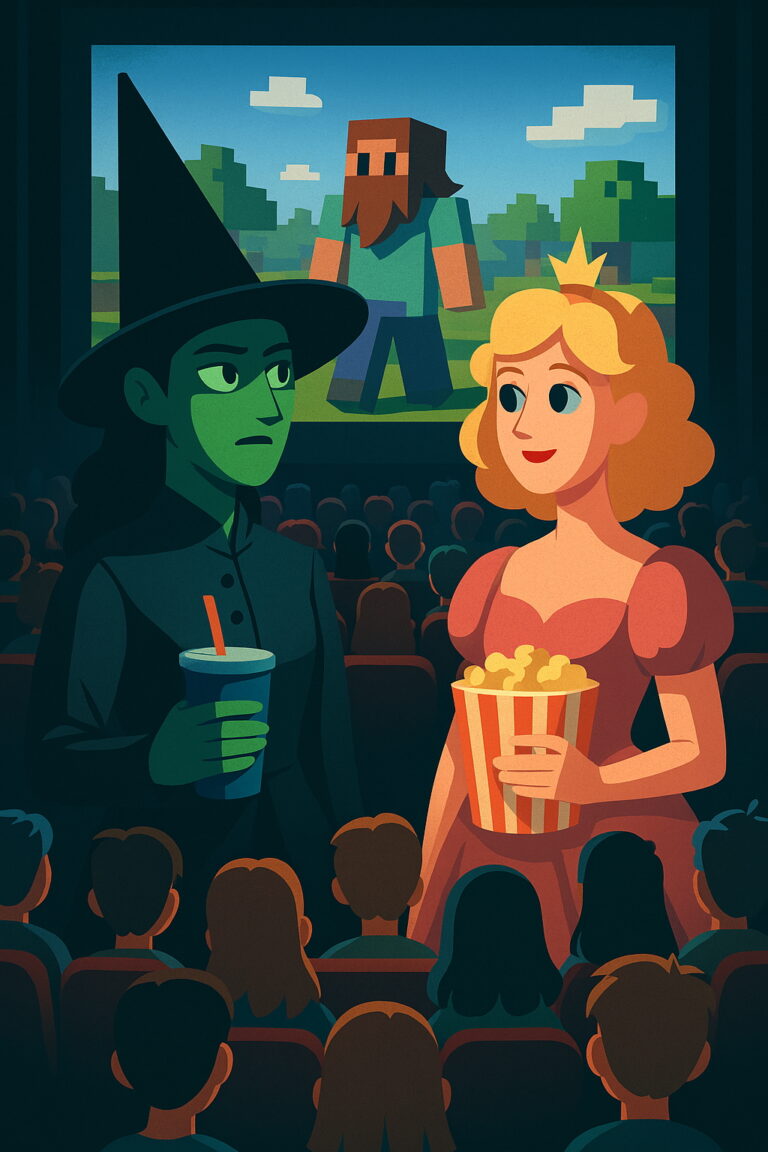Are Movies Really Back? Depends on Who You Ask
Lately, there’s been a lot of noise about Hollywood’s big comeback. The headlines are glowing: theaters are booming, teens are back, movies are having a moment again.
At first, I wanted to believe it. But something felt off—so I took a closer look at the numbers
Let’s Talk Box Office Reality
According to BoxOfficeMojo, the U.S. box office brought in approximately $8.62 billion in 2024, slightly down from 2023’s $8.91 billion. That might sound stable—until you remember that pre-pandemic, theaters were pulling in $11 billion a year.
Add inflation to the mix, and it’s an even steeper drop. In 2014, the average movie ticket was $8.17. By 2024, it had climbed to $11.31 (source: The Numbers). Adjusted for inflation, that makes the 2024 total worth just $6.24 billion in 2014 dollars.
And 2025 isn’t reversing the trend. As of early April, the domestic box office sits at $1.64 billion, down nearly 5% from this time last year.
So no—despite the headlines, the numbers don’t show a roaring recovery.
Who’s Really Keeping Theaters Alive?
According to BoxOfficeMojo, the U.S. box office brought in approximately $8.62 billion in 2024, slightly down from 2023’s $8.91 billion. That might sound stable—until you remember that pre-pandemic, theaters were pulling in $11 billion a year.
Add inflation to the mix, and it’s an even steeper drop. In 2014, the average movie ticket was $8.17. By 2024, it had climbed to $11.31 (source: The Numbers). Adjusted for inflation, that makes the 2024 total worth just $6.24 billion in 2014 dollars.
And 2025 isn’t reversing the trend. As of early April, the domestic box office sits at $1.64 billion, down nearly 5% from this time last year.
So no—despite the headlines, the numbers don’t show a roaring recovery.
A New Kind of Blockbuster
The clearest example? A Minecraft Movie.
With a $157 million domestic debut and $301 million worldwide in its first weekend, it became the biggest video game adaptation ever—surpassing even The Super Mario Bros. Movie.
But Minecraft isn’t a typical “kids movie.” It’s for the kids who’ve outgrown Despicable Me, but still live inside the worlds they love. A movie for the builder generation. The YouTube generation. The creator economy generation.
This audience doesn’t just watch—they participate. They remix. They share. They live inside stories across platforms.
That’s what Minecraft unlocked. And it’s why it exploded.
The Top Performers Tell the Story
Look at the biggest theatrical hits of the past 12 months:
- A Minecraft Movie
- Inside Out 2
- Despicable Me 4
- Moana 2
- Deadpool & Wolverine
- Wicked
Most of these are squarely aimed at kids, tweens, or families. And even the so-called “outliers”—Deadpool and Wicked—still fit the pattern. They tap into identity-based fandom.
- Deadpool & Wolverine isn’t just a superhero movie—it’s a nostalgia-laced payoff for Marvel fans who grew up with these characters.
- Wicked speaks to theater kids and grown-up fans who’ve had the cast recording on repeat since middle school.
In that way, they are not exceptions. They’re evolutions.
They reflect what today’s most power audience already understands.
Theatrical success isn’t about mass appeal anymore. It’s about emotional ownership.
Fandom Starts Young—And Grows With You
The real story of the modern box office is this:
Kid’s are driving it—and they’re doing it through fandom.
They’re the ones showing up, rewatching, dressing up, singing along, and dragging their families with them. They’re not casual viewers—they’re early-stage superfans. And they’re being trained, from a young age, to think of entertainment as something you engage with, not just consume.
The box office isn’t bouncing back on the strength of one-size-fits-all blockbusters. It’s being rebuilt, piece by piece, by audiences that care deeply.
Where Do We Go From Here?
Theaters still matter. Cultural moments still matter. But the playbook is shifting.
If you want to win in theatrical today, you don’t just need a good story. You need the right audience to claim it as theirs—whether it’s a 10-year-old with a Creeper hoodie or a 38-year-old who knows every word to “Defying Gravity.”
The future of movies is being built by kids—
Not just because they’re buying tickets now,
but because they’re growing up expecting more from every piece of content they touch.
At distllr, we don’t design these experiences—we help our clients understand them, plan around them, and act decisively. As embedded, fractional executives, we work alongside founders and leadership teams to translate cultural momentum into smart, forward-looking business strategy.
So, are movies back?
Sort of.
But if they are, it’s the kids who brought them there.
And they’re just getting started.

